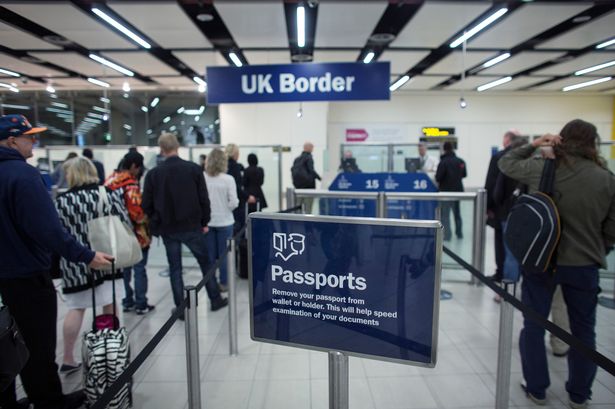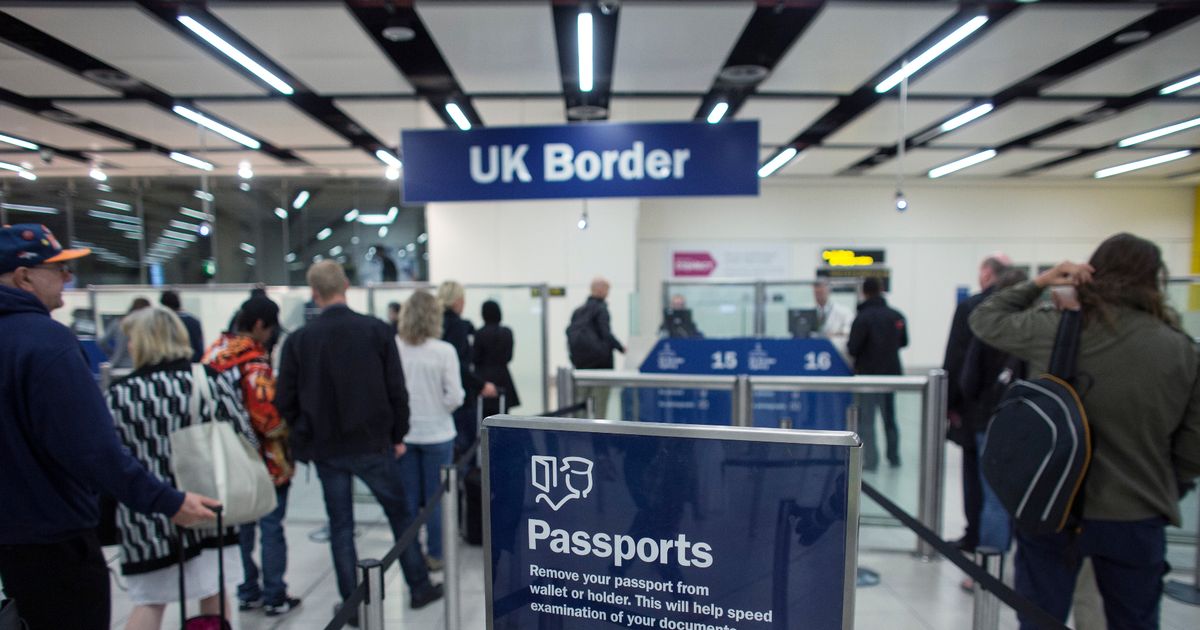The Entry/Exit System (EES) is the first of two changes to be introduced for travel into most European countries A new EES scheme to replace passport stamping when entering most European countries has started to come into effect(Image: Getty Images)
A new EES scheme to replace passport stamping when entering most European countries has started to come into effect(Image: Getty Images)
UK holidaymakers and business travellers have been alerted to the rollout of a new Entry/Exit System (or EES) for people travelling into most European countries. The rules started to come into effect on Sunday, October 12.
It applies to the Schengen Area, a zone of 29 European countries that have abolished internal border checks. The EES means people must now follow a new system for entering and leaving that controlled area.
The countries in the Schengen Area are: Austria, Belgium, Bulgaria, Croatia, Czech Republic, Denmark, Estonia, Finland, France, Germany, Greece, Hungary, Iceland, Italy, Latvia, Liechtenstein, Lithuania, Luxembourg, Malta, Netherlands, Norway, Poland, Portugal, Romania, Slovakia, Slovenia, Spain, Sweden, and Switzerland. The Republic of Ireland and Cyprus are members of the European Union but are not within the Schengen Area, so EES does not apply when travelling to either of those countries. Here’s what the EES means for your travel plans.
READ MORE:
What the EES means for your holidays
EES registration will replace the current system of manually stamping passports. European countries using the EES are introducing the system gradually at their external borders from October 12. It will be fully implemented by April 10, 2026.
The Foreign Office says if you are travelling to a country in the Schengen Area for a short stay using a UK passport, you will be required to provide your fingerprints and have a photo taken when you arrive.
Each passenger’s registration is expected to take a few minutes, so be prepared to wait longer than usual at border controls. EES registration is free, and you don’t need to do anything before you arrive at the border.
If you are flying to a country in the Schengen Area, you will complete the EES checks when you arrive at your destination.
If you enter the Schengen Area through the Port of Dover, Eurotunnel at Folkestone, or St Pancras International, EES checks will be completed before you leave the UK. You may also need to provide either your fingerprint or photo when you leave the Schengen Area to return home.
If you frequently travel to the Schengen Area for work and/or leisure purposes, you must ensure your total stay is no more than 90 days in every 180 days.
Your digital EES record remains valid for three years. If you re-enter within this period, you will only need to provide a fingerprint or photo at the border upon entry and exit.
Lori Delaney, Marketing Manager at Trtl Travel, said: “The EU Entry/Exit System (EES) is the first of the two changes to be introduced and will affect the way you cross the border between participating countries. This change will replace the traditional manual-stamping passport rules for Europe with an electronic system that registers anyone entering or leaving countries digitally.
“While this might sound confusing, the change just means your movements will be recorded each time you cross over a border within the Schengen Area, rather than the current system that lets you move freely between countries once you arrive in the EU.
“The second change is the implementation of the European Travel Information and Authorisation System (ETIAS), which is the European Union’s new travel authorisation system. It’s similar to the Electronic Travel Authorisation (ETA) that non-UK residents need to enter the UK on holiday or the ESTA system used in the US, which requires visitors to pay a $21 fee for a two-year travel authorisation.”
